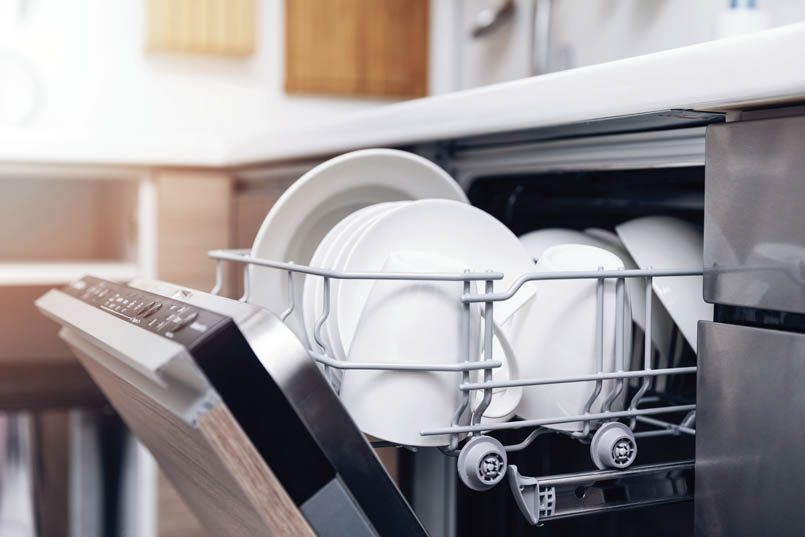16 Nov 2018 Holiday energy saving tips
by Beth Jimmerson
The winter holidays are a time for delicious food and festive fun shared with cherished company, but your energy use can rise considerably with all the extra decorating and entertaining shared with family and friends.
While today’s new household appliances use nearly 50 percent less energy than those built just a decade ago, they’re worked overtime during the holidays, which can add to your utility bill. Americans spend more than $65 billion a year on holiday gifts, but thankfully it’s easier to keep your added holiday energy costs to a minimum with just a few simple tips.
Cooking tips
The turkey is traditionally stuffed early in the morning and roasted for hours. Since it’s a long, slow cook, there’s no need to preheat your oven – even when the recipe suggests it. This also holds true for a holiday ham. In fact, unless you’re baking breads or pastries, you may not need to preheat the oven at all.
Don’t open the oven door to take a peek at what’s cooking inside. Instead, turn on the oven light and check the cooking status through the oven window. Opening the door for even a few seconds lowers the temperature inside by as much as 25 degrees, which increases cooking time and wastes energy.
If you use glass or ceramic pans, try turning your oven down by 25 degrees. Your dish will cook just as quickly.

When cooking on top of your range, match the size of the pan to the heating element. More heat will get to the pan and less will be lost to the surrounding air. Believe it or not, a six-inch pan on an eight-inch burner will waste more than 40 percent of the energy.
Clean burners and reflectors provide better heating, while saving energy. If you need new reflectors, buy quality ones. The best on the market can save as much as one-third of the energy used when cooking on top of the stove.
Don’t overlook the other cooking appliances during the holidays. Fast and efficient microwave ovens use around 50 percent less energy than conventional ovens, and they don’t heat up your kitchen. Consider using them to bake yams, steam your favorite fresh vegetables or heat up leftover turkey and gravy for a midnight snack.
Use your slow cooker. For about 17 cents worth of electricity, you can prepare an entire meal.
Cleaning and household tips
A load of dishes cleaned in a dishwasher requires 37 percent less water than washing dishes by hand. However, if you fill the wash and rinse basins instead of letting the water run, you’ll use half as much water as a dishwasher after your holiday party.
If you opt to use the dishwasher, wash full loads only. If you must rinse your dishes before loading them, use only cold water so you’re not running up your energy bill by heating water unnecessarily.
Use the energy-saving cycles whenever possible. Dishwashers that feature air power or overnight dry settings can save up to 10 percent of your dishwashing energy costs.
Store extra beverages outside or in a cold garage during the winter to save on the energy required to power a second refrigerator.
Consider unplugging your Christmas lights or other electronic decorations and devices during the daytime or if you’re traveling for the holidays. In the average home, nearly 75 percent of the energy used to power electronics is consumed while they are turned off but still plugged in.
When it comes time to buy gifts for your friends and family, opt for Energy Star certified electronics, which use up to 60 percent less electricity than their non-certified counterparts. In addition, laptop computers require 50 to 80 percent less power than a desktop computer.
Decorating tips
Consider buying miniature lights, which use about 70 percent less energy and last much longer than the larger bulbs. If you prefer larger lights, switch to 5-watt bulbs, which use about 30 percent less energy than 7-10 watt bulbs. A 100-bulb strand of miniature lights will cost the typical residential customer $13.50 a month versus the $33.75 it costs to operate traditional bulbs.
Want something new or different? Look for LED holiday bulbs – they’re shatterproof, shock resistant, safe to touch and won’t burn your hands. Plus, they save up to 80 to 90 percent of your energy costs and can last up to 20 years. Ten sets of 100 LED bulbs cost the typical residential customer only $1.35 per month to operate.
Plug your indoor and outdoor lighting displays into a timer set to run during the earlier evening hours. This will also remove the burden of turning lights on and off or accidentally leaving them on and running up your electric bill unnecessarily.
Rather than adding more lights to your tree, try enhancing the existing lighting with tinsel, mirrored ornaments and other reflective ornaments. Also, consider decorating your home with fewer lights and using more decorations that don’t use energy like wreaths or poinsettias.
Saving energy is a habit you should practice all year long, and the holidays are a great time to start. Just simply being aware of your energy usage can help you save energy and money. You can even make a New Year’s resolution that’s good for your pocketbook and the environment by scheduling a free residential energy audit through the Conway Corp Energy Smart program.
For additional information on energy efficiency or to schedule your audit, contact Conway Corp at 501.450.6000 or visit ConwayCorp.com/EnergySmart.
- This winter, keep the warm in and the chill out - December 2, 2025
- Let’s talk turkey - November 4, 2025
- The benefits of public power - September 30, 2025








